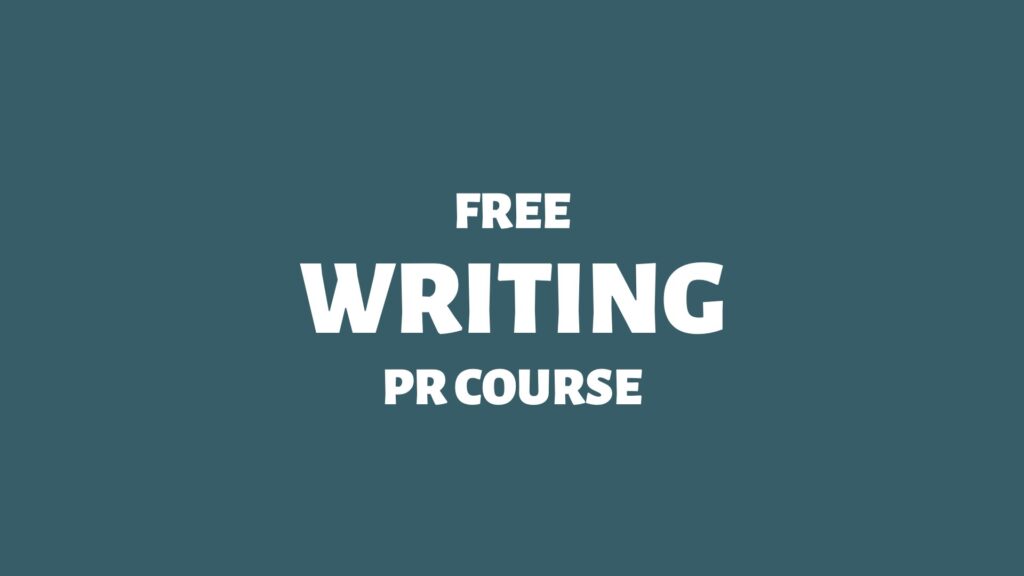Let me walk you through how to write a PR pitch.
Should you call or email the journalist?
Calling or emailing is a hot potato that most journalists and many public relations professionals will recommend — emailing. Still, this doesn’t mean that making a phone call won’t sometimes work better. 1Among digital PR professionals surveyed, 94% said individual emails are still the most effective pitching to journalists. Among journalists surveyed, 93% said 1:1 emails are the best way to pitch.
Put it like this: If you know that the journalist is a “phone person,” that the timing is good, and that your pitch is urgent enough, by all means, go ahead and make a call instead.
In any case, you should write your pitch down.
Aim for no more than half a page in length.
Here we go:
How To Write a PR Pitch
Start simple: Always introduce yourself, clarify your affiliation, and ask permission to state your business.
My name is Jerry Silfwer, I work at Spin Factory, and I’m [calling/writing] on behalf of ACME Chemicals. I have a news story about chemical plants failing to meet environmental- and safety regulations. Would this be a good time to hear me out?
Already at the get-go, I’m clearly stating that I will pitch a news story.
My objective is to bring attention to the fact that my client has gone to great lengths to comply with government regulations. This is, however, not news.
However, what does this imply if my client is the only chemical company to comply with the new regulations? It means that all of their competitors are non-compliant. And that is news.
If the journalists agree to hear you out, go ahead and frame the conflict:
Two hundred forty-one chemical plants are operating in Sweden. According to an unpublished paper here in my hand, only 62 are living up to the government’s new environmental regulations last year. In other words: 3 of 4 of all chemical plants in Sweden might be hazardous to the people living or working near them.
At this point, the journalist might be ready to jump in. How hazardous are these plants? Why are they dangerous? What kind of evidence do I have to back my claim up?
In any case, it’s time to position your spokesperson:
In light of these disturbing figures, would you be interested in getting your hands on these documents and talking exclusively with Dr Mary Samsonite at ACME Chemicals about:
— How hazardous are these plants?
— Where are these potentially hazardous plants situated?
— Why is there no governmental oversight to force them to comply?
Once again, the focus is 100% on the news story still.
Sometimes you can offer exclusivity; sometimes, you can’t. Even though I could come up with 20 relevant questions to suggest, I kept it to three to clarify the pitch.
If you get a straight no, then that’s fine. It happens. If you get a yes or a maybe, you move on with the final part of your written pitch:
If you’re interested, Dr Mary Samsonite has agreed to meet with you and a photographer on Wednesday at 2 pm or Thursday at 10 am this week. Would any of those slots work for you?
I’m aggressively suggesting a physical meeting in this fictitious example, but it depends on the pitch and the context. In times of Covid-19, for instance, I’m more likely to propose a Zoom interview.
Now, let’s look at the written PR pitch as a whole:
My name is Jerry Silfwer. I work at Spin Factory and am [calling/writing] on behalf of ACME Chemicals. I have a news story about chemical plants failing to meet environmental- and safety regulations. Would this be a good time to hear me out?
Two hundred forty-one chemical plants are operating in Sweden. According to an unpublished paper in my hand, only 62 are living up to the government’s new environmental regulations last year: 3 of 4 of all chemical plants in Sweden might be hazardous to the people living or working near them.
In light of these disturbing figures, would you be interested in getting your hands on these documents and talking exclusively with Dr Mary Samsonite at ACME Chemicals about:
— How hazardous are these plants?
— Where are these potentially hazardous plants situated?
— Why is there no governmental oversight to force them to comply?
If you’re interested, Dr Mary Samsonite has agreed to meet with you and a photographer on Wednesday at 2 pm or Thursday at 10 am this week. Would any of those slots work for you?
At this point, allow me to take a step back and appreciate what’s going on here from the perspective of the PR client:
Preparing Your PR Pitch
No, ACME Chemicals probably never asked me to pitch a story about potentially dangerous chemical plants in Sweden:
This whole thing probably started in a conference room where the CEO bragged to me about how they “ran the only chemical plants in the country in compliance with the government’s new stricter regulations.”
So, before pitching the reporter, here’s some of the work that I had to do to get the PR pitch into usable shape:
Step 1. When I signed an NDA (non-disclosure agreement), I had to explain to the CEO that ACME Chemical’s regulatory excellence is excellent but not news.
Step 2. I had to run a study for data or find a way to extract factual evidence to support and confirm the claim that zero other chemical plants in Sweden comply with the regulations.
Step 3. With confirmation, I had to talk to an expert to learn what non-compliance in this context means regarding real risks.
Step 4. I had to vet and prepare an in-house expert spokesperson — the CEO is credible when it comes to business matters but not matters of advanced chemistry.
Step 5. I wrote the PR pitch (and often a press release) and got client approval. And yes, client approval can sometimes take weeks!
In media relations, pitching the story to a journalist is not a crucial part of the job. The essential part of the job is to identify relevant corporate stories and turn them into the news. That’s where most of my effort is spent.
As for writing the pitch, personalisation is vital. Your pit should never sound like a template. 2The most cited reason among journalists for rejecting a pitch was the lack of personalisation (Muck Rack, 2020).
Some organisations find the concept of newsworthiness uncomfortable. If they’re adamant about only bragging about their greatness, politely suggest they remove an ad. In an ad, they’ll get to say whatever they want.
Or — which is often an excellent option for corporate success stories — convince the organisation to target a trade- or business vertical instead.

Thanks for reading. Please support my blog by sharing articles with other communications and marketing professionals. You might also consider my PR services or speaking engagements.
PR Resource: Free Toolbox PR Course

Spin Academy | Online PR Courses
Doctor Spin’s PR School: Free Toolbox PR Course
Get ahead in your public relations career with this free Toolbox PR Course. Learn from seasoned industry professionals and elevate your skills for free!
“Either write something worth reading or do something worth writing.”
— Benjamin Franklin
Learn more: All Free PR Courses
💡 Subscribe and get a free ebook on how to get better PR ideas.

PR Resource: Free Writing PR Course

Spin Academy | Online PR Courses
Doctor Spin’s PR School: Free Writing PR Course
Discover the power of effective PR writing with this free Writing PR Course. Find tips and inspiration. Boost your skills and boost your career prospects today.
PR Writing Inspiration
Learn more: All Free PR Courses
💡 Subscribe and get a free ebook on how to get better PR ideas.

PR Resource: Drafting
Spin Academy | Online PR Courses
Communication Skill: Drafting
Drafting, creating, and refining written documents are fundamental communication skills crucial in everyday life. From composing emails and writing reports to crafting personal letters or social media posts, the ability to draft and edit documents ensures clarity, coherence, and effectiveness in conveying messages.
“The first draft of anything is shit.”
— Ernest Hemingway
Many individuals struggle with writing not because they lack ideas but because they underestimate the power of revision. The initial draft is rarely perfect; it’s through revising this draft — transforming it into a second, third, or even fourth draft — that one hones the message, sharpens the language, and strengthens the overall communication.
Developing a habit of drafting and editing allows for exploring ideas, refining thought, and eliminating ambiguity, making the final product more impactful and understood by its intended audience.
To become better at drafting, consider these five tips:
Incorporating these strategies into your writing routine can elevate your drafting skills, leading to precise, compelling, and effective written communication in every aspect of your life.
Learn more: Communication Skills (That Everyone Should Learn)
💡 Subscribe and get a free ebook on how to get better PR ideas.

ANNOTATIONS
| 1 | Among digital PR professionals surveyed, 94% said individual emails are still the most effective pitching to journalists. Among journalists surveyed, 93% said 1:1 emails are the best way to pitch. |
|---|---|
| 2 | The most cited reason among journalists for rejecting a pitch was the lack of personalisation (Muck Rack, 2020). |



